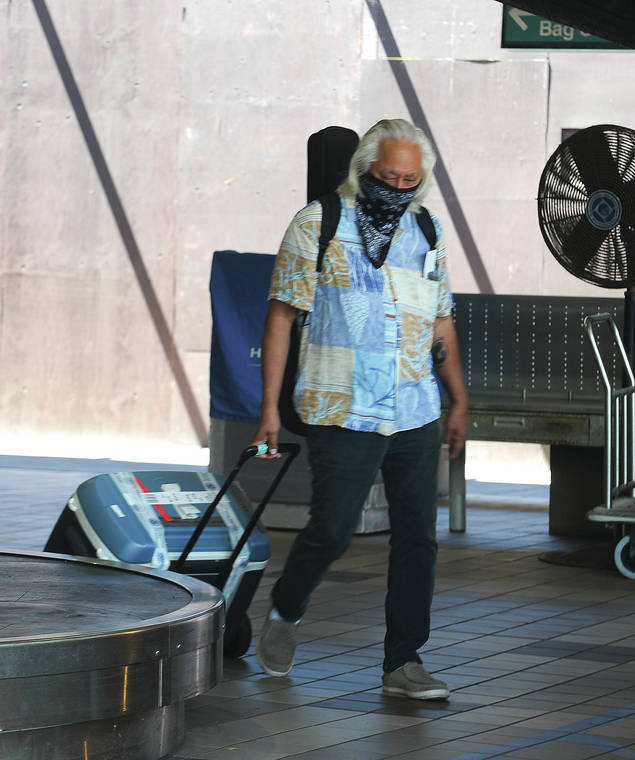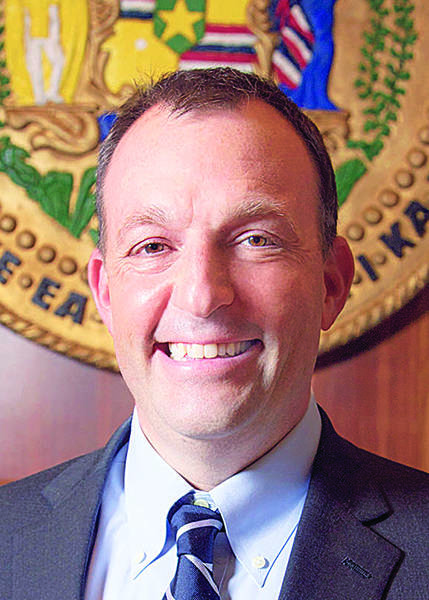In one of his first major public appearances since being released from quarantine, Hawaii Lt. Gov. Josh Green spent Thursday afternoon laying out key details of the state’s pre-travel testing program, scheduled to begin on Oct. 15.
An FDA-authorized Nucleic Acid Amplification Test (NAAT) must be performed within 72 hours of the departure of a traveler’s last leg of travel by a certified Clinical Laboratories Improvement Amendments (CLIA) Lab. Green made a point to clarify that negative antigen or antibody tests would not meet qualifications to avoid the state’s 14-day quarantine.
Companies partnering with the program include CVS, Walgreens and Kaiser, as well as multiple airlines: Hawaiian, United, Alaska and American. Tests would vary from in-person rapid tests at the airport, at clinics or by mail. Noting concern he’s received about tests by mail, Green clarified how they would be administered,
“These tests (by mail) will utilize tele-health; the tests have to be observed,” said Green. “It’s a requirement of our governor.”
Passengers under age 5 are exempt from testing; Green stated the rationale for this decision was if small children are sick, their parents will test positive due to the close proximity between young children and their parents. Travelers who do not have their results back when they arrive will be required to quarantine until they receive a negative test result, as will travelers who test positive at any point during their time in Hawaii.
An estimated 5,000 to 8,000 travelers per day are expected to arrive in the state during the early stages of the program. Green later went on to explain that while one in 200 people in the country’s general population are estimated to be COVID-positive, this program is designed to vastly reduce the odds of those positive individuals from arriving in Hawaii.
“If you add a test, you chop that number down; you chop it way down because you now know up to/within 72 hours of their departure, they were negative for COVID,” said Green. “I’m hopeful that less than one in 1,000 people will somehow be asymptomatic and still positive for COVID. If we have 8,000 travelers like we expect, that will be eight individuals.”
Hawaii is now better equipped to handle this potential increase, according to Green, due to an improved contact tracing program and increased testing capabilities. The balance lies in being able to restart the economy to help those struggling while preventing another surge. Even with a negative test, travelers will still be required to abide by the same social distancing and mask-wearing policies as Hawaii residents.
“Things are very difficult on families, especially working families,” said Green. “This program adds an extra layer of security; that’s the most important thing I can convey to you. Will it be perfect? No. But it will greatly decrease the numbers of cases.”
Demand for travel is expected to be significant; Green projected hotel room bookings to approach 50% of last year’s total by February, with the neighbor islands increasing quicker than Oahu. Hotels on the Big Island, for example, are expected to be above 54% of last year’s booking total in December.
“We expect people to come,” said Green. “We’re starting to see (hotel room bookings) tick up, and I’m told there’s already very large demand for Oct. 15.”
To bolster the program, Green is also pushing for a live beta test in the five days prior to its start, as well as strategic surveillance after its implementation. The strategic surveillance would offer approximately 10% of travelers who have already gone through the program a second test four days after arrival.
“By doing strategic surveillance and checking 10% of the visitors with a second test, we can see: have we missed the mark at all?” said Green. “By doing that, we reassure ourselves that we’re not seeing any kind of strange surge with travel.”
A significant concern expressed by Green was with residents dropping their guard in response to extra activity. With more people at hotels, restaurants and around the community, Green asked Hawaii’s residents to continue taking the necessary actions to prevent another surge.
“It will create a lot of extra activity,” said Green. “We’re going to have to be smart, and we’re going to have to wear our masks, and we’re going to have to wash our hands and we’re not going to go to work when we’re sick.”





